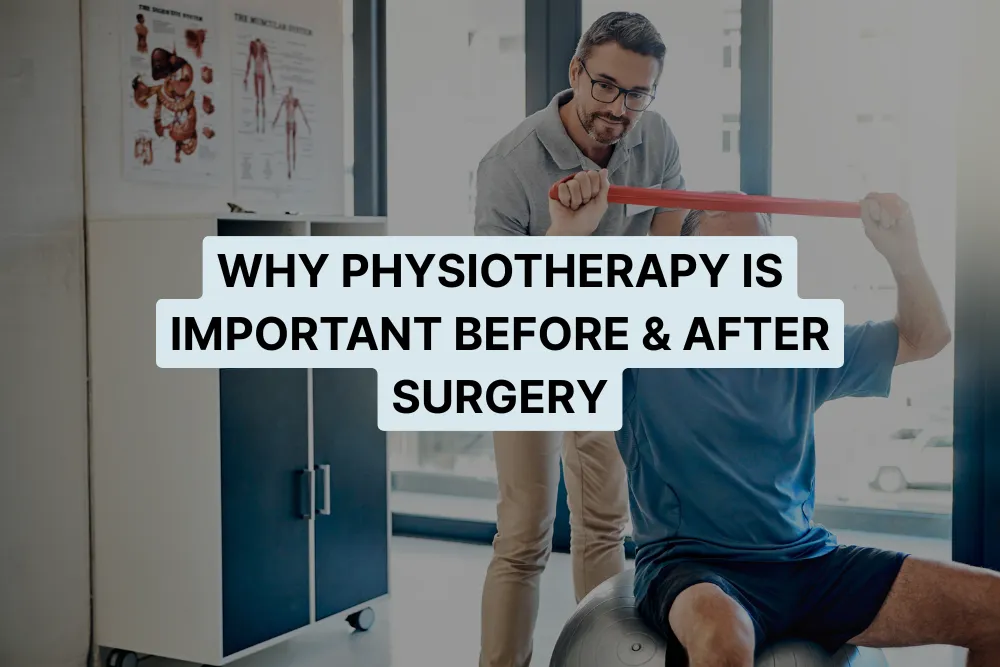Most people think surgery is the hard part. The truth? It’s only step one.
The real challenge comes the next morning when your body feels heavy, stiff, and unwilling to move. That’s when you realize recovery isn’t automatic, it has to be built.
This is where physiotherapy makes the difference. What you do before and after surgery often decides how quickly you heal, how much pain you feel, and how soon you can get back to living normally.
Physiotherapy Before Surgery (Prehabilitation)
Physiotherapy isn’t only about recovery, it can also prepare your body for surgery.
Prehabilitation (or “prehab”) is your training plan for the body before surgery.
Why it matters:
- Stronger muscles, easier recovery – Building strength in the muscles around the surgical site helps you regain function faster after surgery.
- Better circulation and lung health – Pre-surgery exercises improve blood flow and breathing, lowering risks of clots and chest infections.
- Pain & movement strategies – You’ll learn safe ways to move and exercises you’ll need immediately after surgery—making you confident instead of anxious.
- Proven faster recovery – Research shows patients who do prehab recover quicker, need fewer pain medications, and often leave the hospital sooner.
Physiotherapy After Surgery (Rehabilitation)
Surgery fixes the problem; rehab helps you get your life back.
In the weeks and months after surgery, physiotherapy is tailored to your stage of healing.
How it helps:
- Restores mobility – Gentle, progressive exercises prevent stiffness and get your joints moving again.
- Speeds up tissue healing – Movement improves circulation, reduces swelling, and supports tissue repair.
- Prevents long-term issues – Without guided rehab, complications like joint stiffness, muscle weakness, or blood clots can set in.
- Manages pain safely – From manual therapy to ice, heat, or electrical stimulation, physiotherapy reduces discomfort without relying only on medication.
- Builds strength & independence – Rehab rebuilds balance, coordination, and strength so you can return to everyday activities—or even sports.
- Tailored to you – Every surgery and every patient is different. Your physio adapts your plan so recovery is safe and effective at each step.
The Takeaway
Surgery is just the starting point. Physiotherapy is what transforms it into full recovery.
- Before surgery, physiotherapy prepares your body, reduces risks, and builds confidence.
- After surgery, it guides you safely through recovery, restoring strength, mobility, and independence.
It’s worth noting that not all surgeries show the same level of benefit from prehab or post-surgery rehabilitation. While many patients recover faster, in some cases hospital stays or complication rates may not change significantly. The best outcomes are usually seen when physiotherapy is combined with nutrition and emotional support – a holistic approach.
If you’re scheduled for surgery, don’t wait until afterward to think about rehab. Speak with a physiotherapist early, build your prehab plan, and give yourself the best chance at a smooth, strong recovery.

Amit Saraswat is the Founder of Physioveda Medical Center, a Dubai-based clinic focused on personalized physiotherapy and integrative healthcare. With a passion for patient-centric solutions, he leads the vision behind Physioveda’s evidence-based approach to pain relief and long-term recovery.

